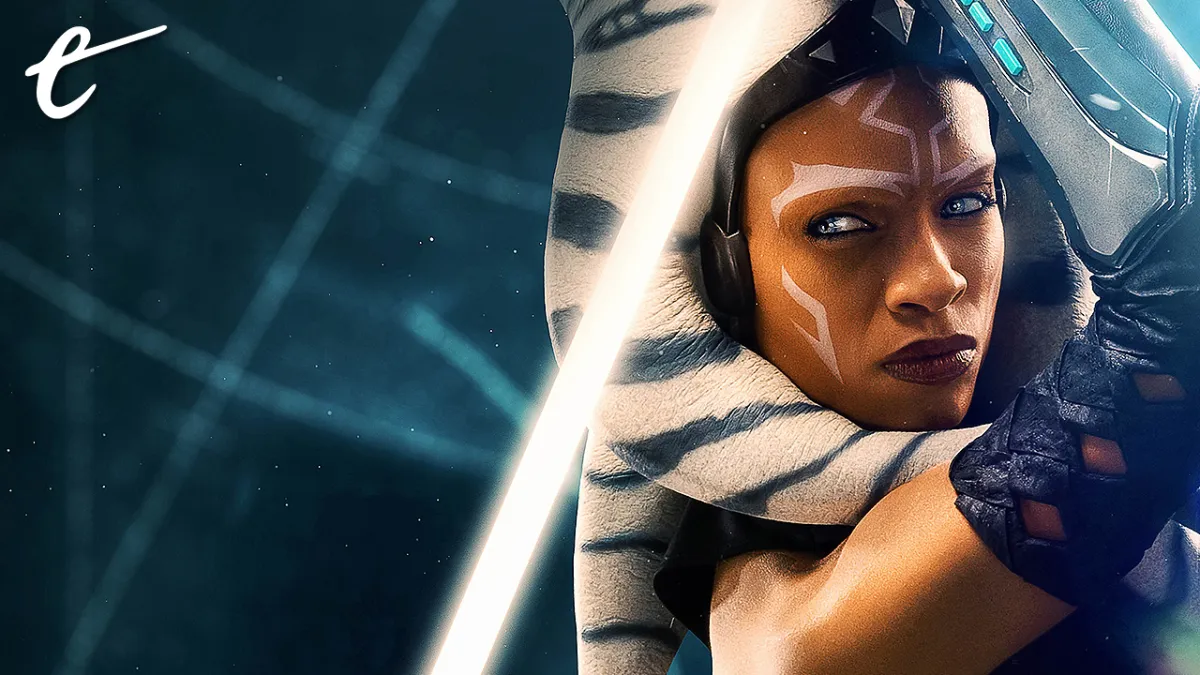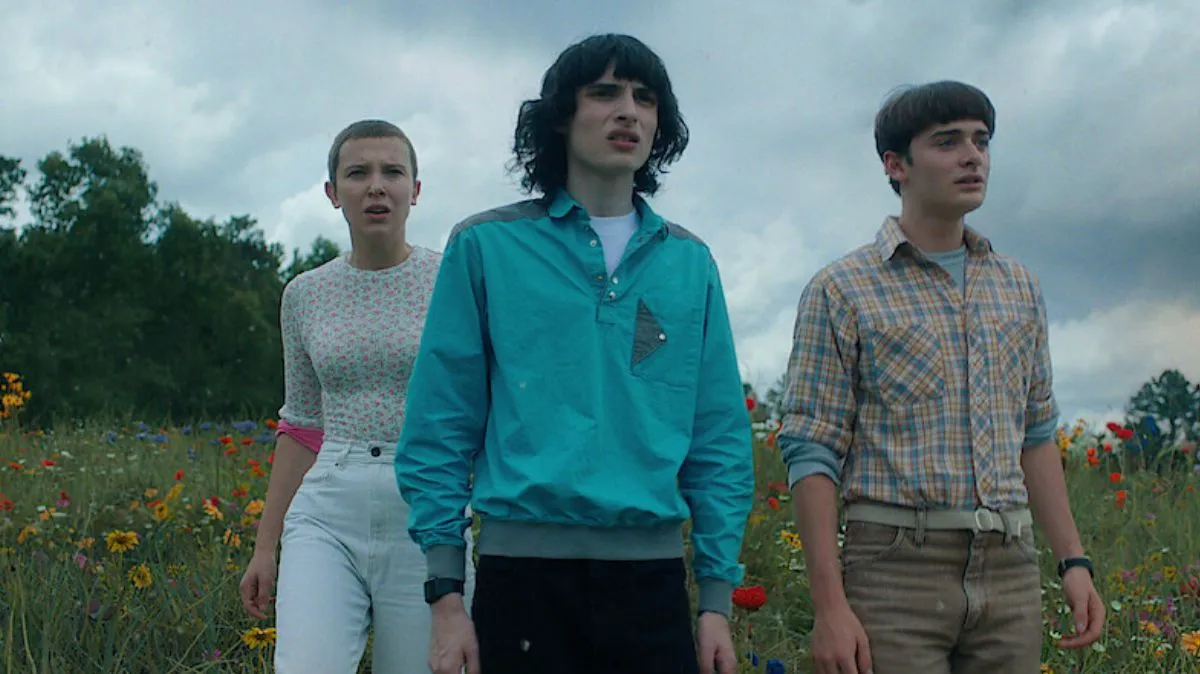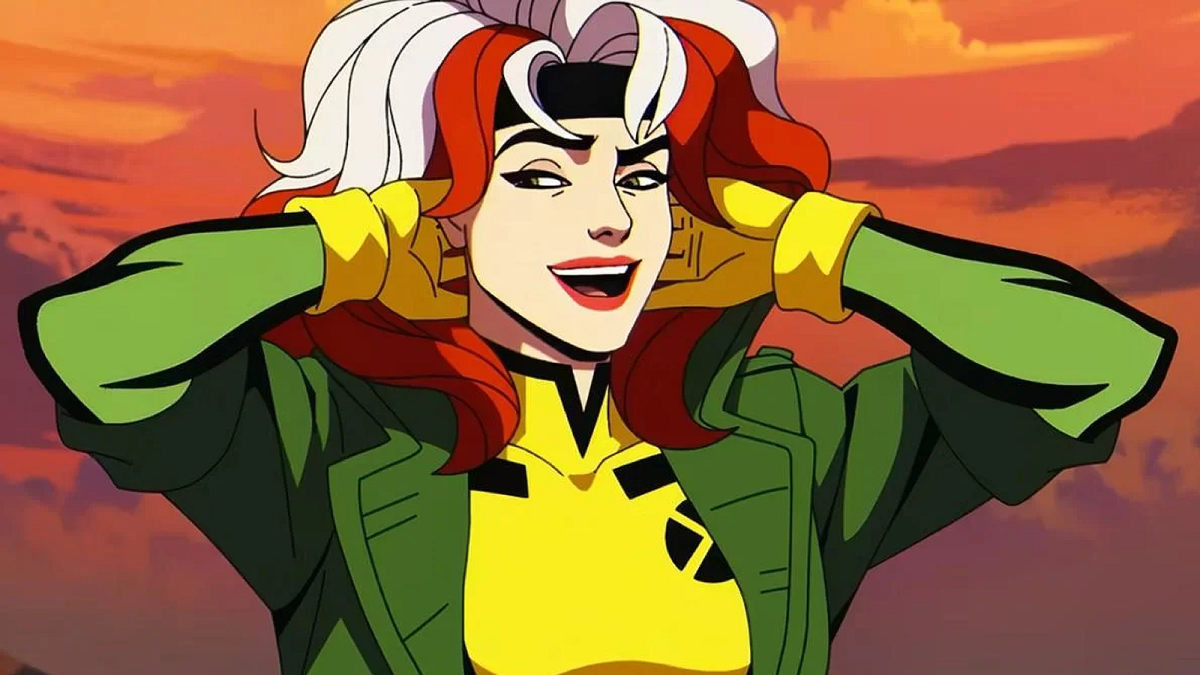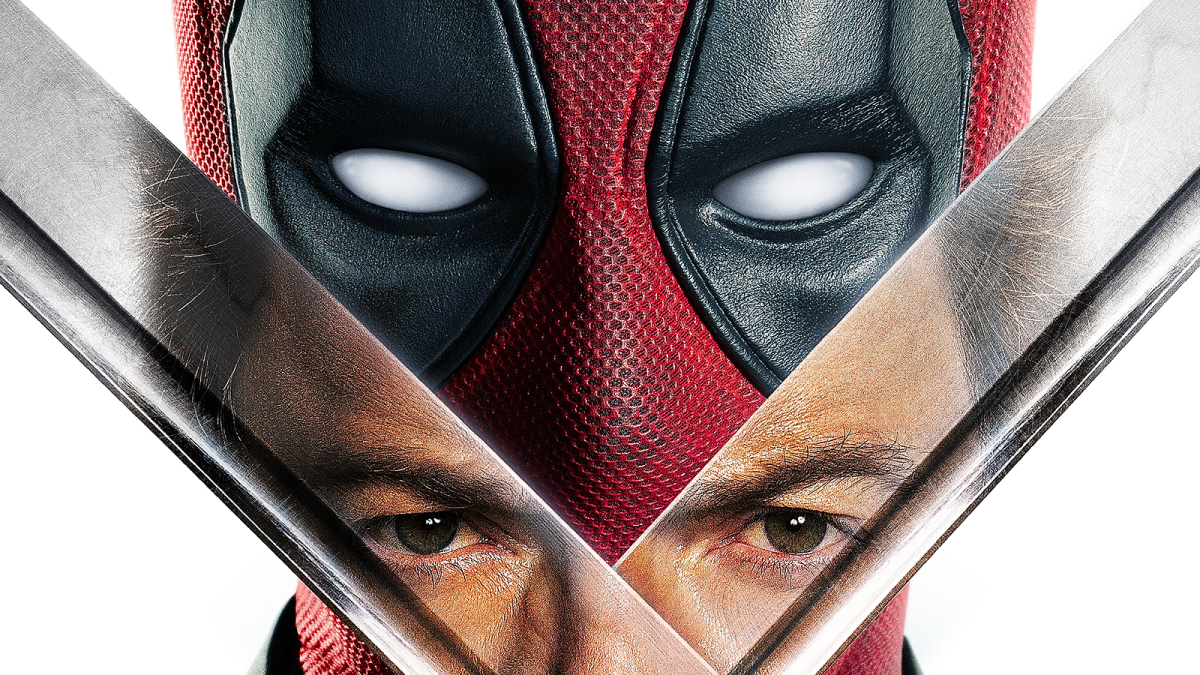The following review of Ahsoka episode 1 and 2 contains minor spoilers.
The first two episodes of Ahsoka are solid and sturdy pieces of Star Wars.
Of course, the notes from the studio ask reviewers to refrain from discussing specific character beats, plot points, and character beats in pre-release coverage, which can make it very difficult to discuss the show in any real depth. The series is a live action continuation of the animated Star Wars universe that played out in shows like Star Wars: The Clone Wars and Star Wars Rebels, with Rosario Dawson continuing in the live action role of Ahsoka Tano, which she took over from voice actor Ashley Eckstein.
This is not Dawson’s first time playing the character. She has made minor appearances in both The Mandalorian and The Book of Boba Fett, as a teaser for this solo spin-off. There is perhaps a debate to be had about whether it might have been more effective to “save” the character’s live action debut for her own series, allowing Dawson the opportunity to define the character within her own narrative rather than via a couple of cameos. Still, all roads lead to Ahsoka.
Ahsoka is the brainchild of Dave Filoni, who is largely the architect of the aforementioned animated spin-offs. Filoni has developed a reputation among certain parts of the fandom as a creator with an immense respect for the franchise’s lore and a strong grounding in basic narrative principles. His transition into live action Star Wars seemed inevitable. He spent time with Rian Johnson on the set of Star Wars: The Last Jedi and wrote and directed for both The Mandalorian and The Book of Boba Fett.
Filoni will write all eight episodes of Ahsoka, exerting a similar level of control to that demonstrated by Jon Favreau over The Mandalorian and The Book of Boba Fett. He will also direct two episodes of the show, including the premiere. This makes sense. Filoni created Ahsoka Tano and admits that he is “really protective of that character.” In some ways, it is a match made in heaven. Disney needs more talented creatives working on Star Wars, and nobody knows the character better than Filoni.
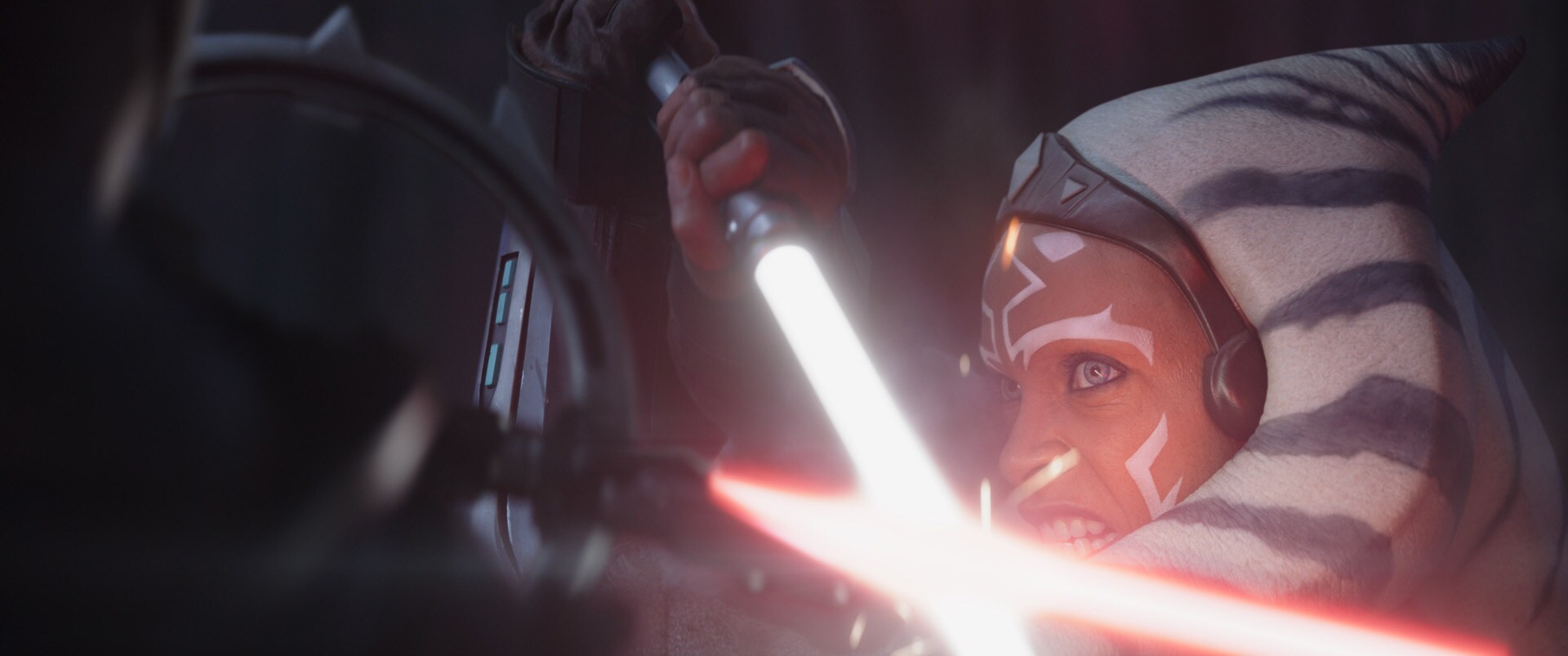
In its best moments, Ahsoka demonstrates Filoni’s cartoonish sensibilities, in particular his ability to tell stories visually rather than relying on exposition or dialogue. Filoni is a filmmaker who has a keen grasp of movement and drama, and one of the big fears in transitioning his work into live action is that this might be lost. Ahsoka reintroduces its eponymous heroine with an extended dialogue-free sequence that very consciously channels another Lucasfilm property, Raiders of the Lost Ark.
It’s incredibly charming, and many of the most enjoyable sequences of Ahsoka are largely wordless. Another returning character from the animated shows is introduced racing down a long stretch of highway on an alien world, trying desperately to avoid their responsibilities in the post-Return of the Jedi order. It’s a fun and thrilling set piece that allows Filoni to show off how good he is at action, showcasing objects and characters in motion.
There are four problems with this, of varying degrees of magnitude. As suggested above, that silent introduction of Ahsoka Tano, leaning into Dawson’s physicality rather than her voice and so serving to distinguish her from Eckstein’s earlier portrayal, would be more compelling if the audience hadn’t already seen Dawson-as-Tano multiple times in live action. The introduction of Indiana Jones (Harrison Ford) in Raiders of the Lost Ark is so effective because it’s an introduction.
The second issue is that this approach makes Ahsoka incredibly dependent on direction, rather than on writing. Of the two episodes previewed to press, the premiere is by far the stronger effort, even though both are written by Filoni. That is because Filoni’s animator’s eye makes the action sequences sing. The first episode has a sense of movement and dynamism that the second episode can’t quite match, despite the best efforts of director Steph Green.
The third issue is that it can often feel like Filoni is still writing for the animated shows. The Clone Wars and Rebels were twenty-minute animated shows aimed at younger audiences, so there was an acceptable clumsiness to their dialogue. Because there was only so much time, and because the audience was assumed to be young, subtext was often bluntly rendered as text. Indeed, episodes of The Clone Wars would handily begin with a title card helpfully stating the moral of the story.
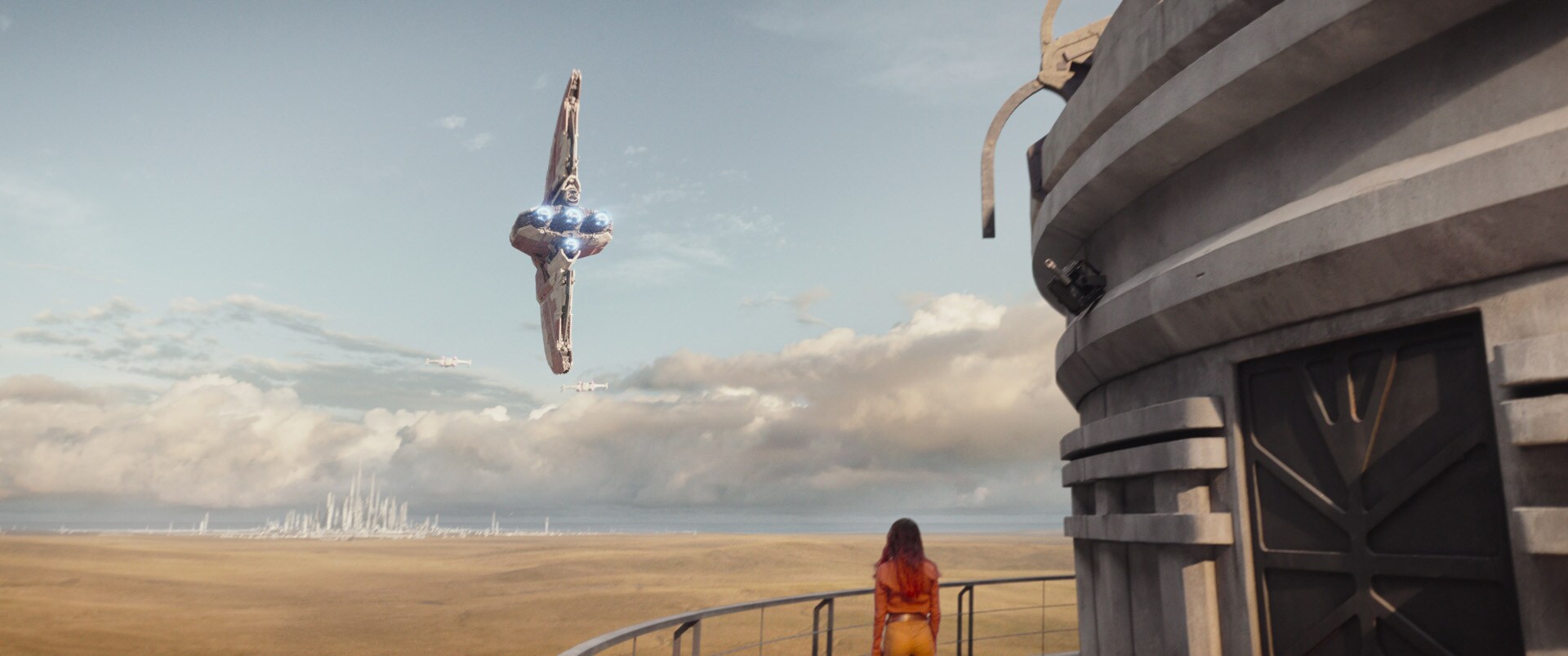
Ahsoka is an hour-long live action series ostensibly aimed at a more mature audience. It eschews those opening title cards. However, the tone of the writing is still very much the same, with characters just outright stating themes in dialogue. The first episode might not have a handy title card outlining the central moral, but it does have Tano directly stating, “Sometimes even the right reasons have the wrong consequences. What do we do then?” It’s the same difference.
There’s a certain clumsiness to the scripting, which the show is able to sidestep in its more fluid moments, but which still occasionally grinds the narrative to a halt. At one point, a character fails Ahsoka, allowing a vital resource to fall into evil hands. “You need my help,” the character pleads as Ahsoka prepares to leave the room. Ahsoka barely stops on her way out the door, “No, you’ve done enough.” It’s cliché and it’s functional, and it’s not especially interesting.
The fourth and final issue is that Ahsoka feels incomplete without knowledge of The Clone Wars and Rebels. This is not a surprise. According to Dawson, Filoni has described Ahsoka as “basically like the fifth season of Rebels.” For many viewers, this will be a feature rather than a bug. To be fair, Filoni does a good job bringing the audience up to speed on the character and plot beats. It’s not confusing in a narrative sense, which is a credit to the writing. It’s easy to follow along with.
However, Ahsoka isn’t particularly interested in creating any emotional attachment for the audience. It just assumes that attachment already exists. It’s a shame, because it is possible to continue a pre-existing narrative while onboarding new viewers. Joss Whedon’s Serenity is a great movie, even if the viewer has never seen Firefly. The Color of Money can be watched without even knowing that The Hustler exists. Russell T. Davies’ Doctor Who was accessible to old and new fans alike.
In some ways, Andor really spoiled viewers, demonstrating that it was possible for these sorts of brand streaming shows to exist as more than just functional examples of larger intellectual property, but as compelling television in their own right. Ahsoka compares favorably to Disney’s recent streaming efforts like Secret Invasion or Obi-Wan Kenobi, but it often feels like it’s more invested in being good Star Wars than in being great television. Andor proved it was possible to be both.
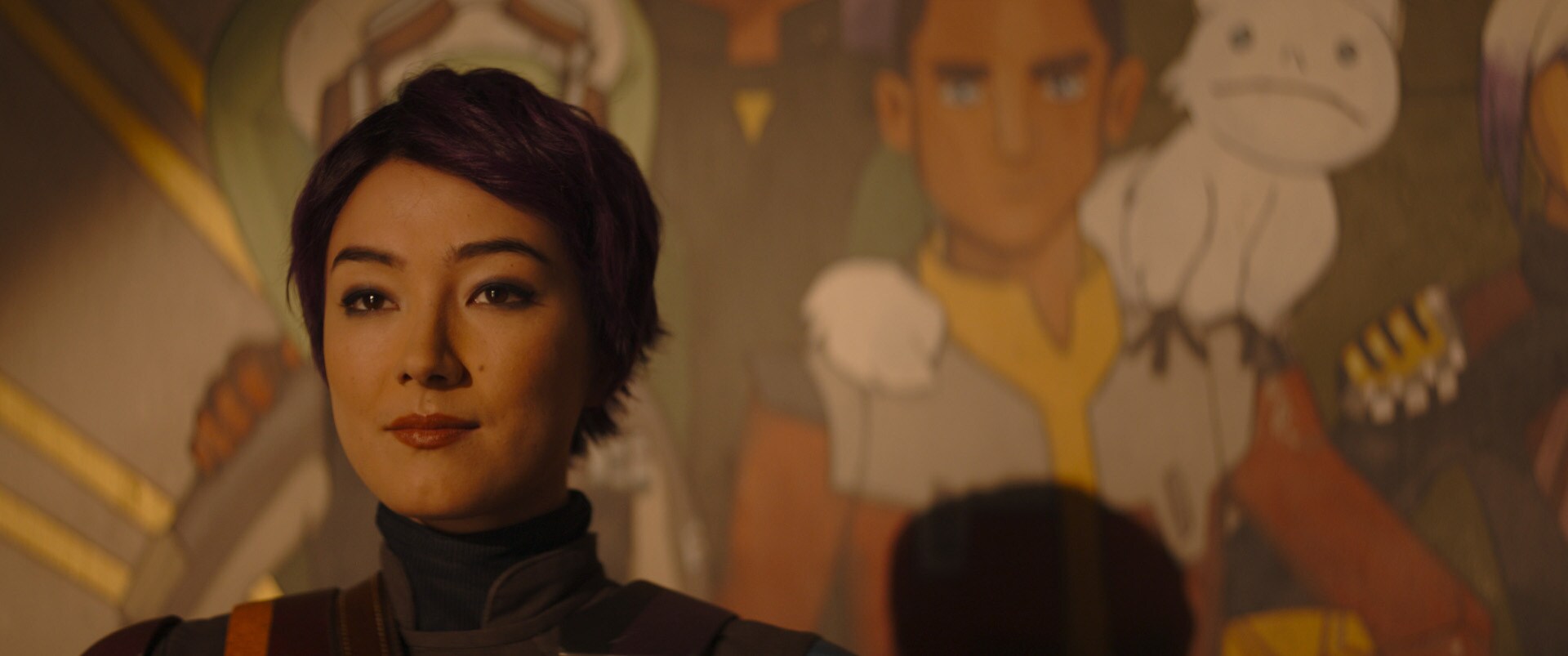
It’s worth being clear on this. While recent Star Wars streaming projects like the third season of The Mandalorian, Obi-Wan Kenobi, and The Book of Boba Fett are narrative messes, Ahsoka is reassuringly well-made. Filoni knows how to structure a story, how to provide information, and how to establish character. Just in terms of basic craft, Ahsoka stands apart from so many of the modern live action Star Wars shows, even if it remains in the shadow of Andor.
That said, watching the first two episodes of Ahsoka, it’s interesting to see what the show thinks “good Star Wars” looks like. Nostalgia has become a dominant force in shaping the Star Wars franchise. While that nostalgia has always been present, it used to look outwards at diverse influences like Dambusters or The Hidden Fortress. Since Disney took over, with exceptions like The Last Jedi and Andor, the franchise’s nostalgia increasingly looks inwards.
Early Disney Star Wars tended to channel its nostalgia to the original trilogy, with J.J. Abrams’ Star Wars: The Force Awakens largely serving as a beat-for-beat remake of the original movie, and The Mandalorian pairing a new character who looked just like Boba Fett with a new character who looked just like a baby version of Yoda. Ahsoka is interesting because it suggests that the nostalgic gaze has shifted slightly forward in time. Disney’s Star Wars is now nostalgic for itself.
Ahsoka seems to gaze lovingly back at the first season of The Mandalorian. It’s another story about a wandering hero, a strong-but-silent type with repressed parental instincts, navigating a series of relatively self-contained adventures that build to a larger arc about the threat posed by “Imperial remnants” in the gap between the original and sequel trilogies. The show’s relative disinterest in lore and mythology and somewhat focused nature evoke the earliest days of these streaming shows.
However, it’s more than that. The show’s first big action set piece directly evokes a fan-favorite sequence from Rogue One: A Star Wars Story. This is revealing, but also frustrating. Ahsoka is more interesting when it does its own thing, leaning into the weirdness that The Clone Wars and Rebels frequently indulged, with references to elements like “the Nightsisters of Dathomir” or “the Pathway to Peridea” and set pieces that suggest a pagan mysticism largely absent from live action Star Wars.
Still, there’s an admirable efficiency and focus to this. Ahsoka knows what it is doing, and it knows how to do it. Ahsoka might not be great television, but it is committed to being good, clean Star Wars.
Related: Every Star Wars TV Show Ranked, by The Mary Sue

